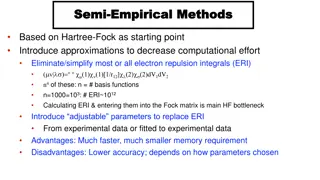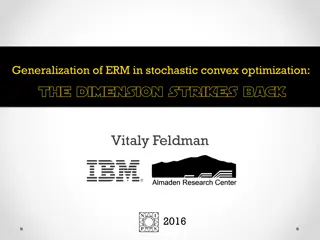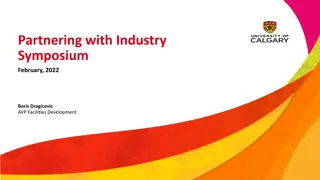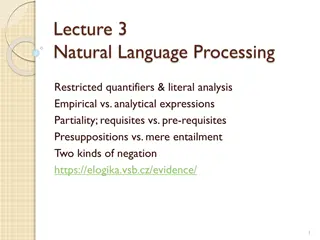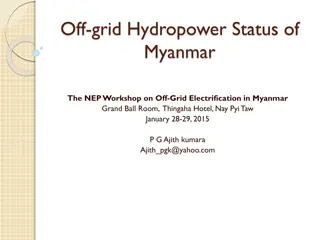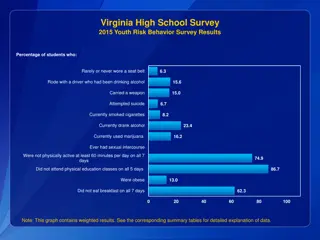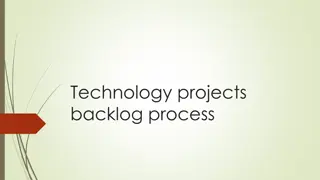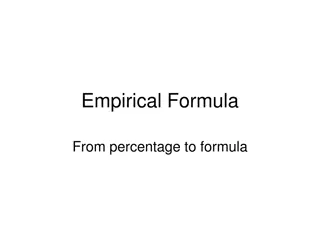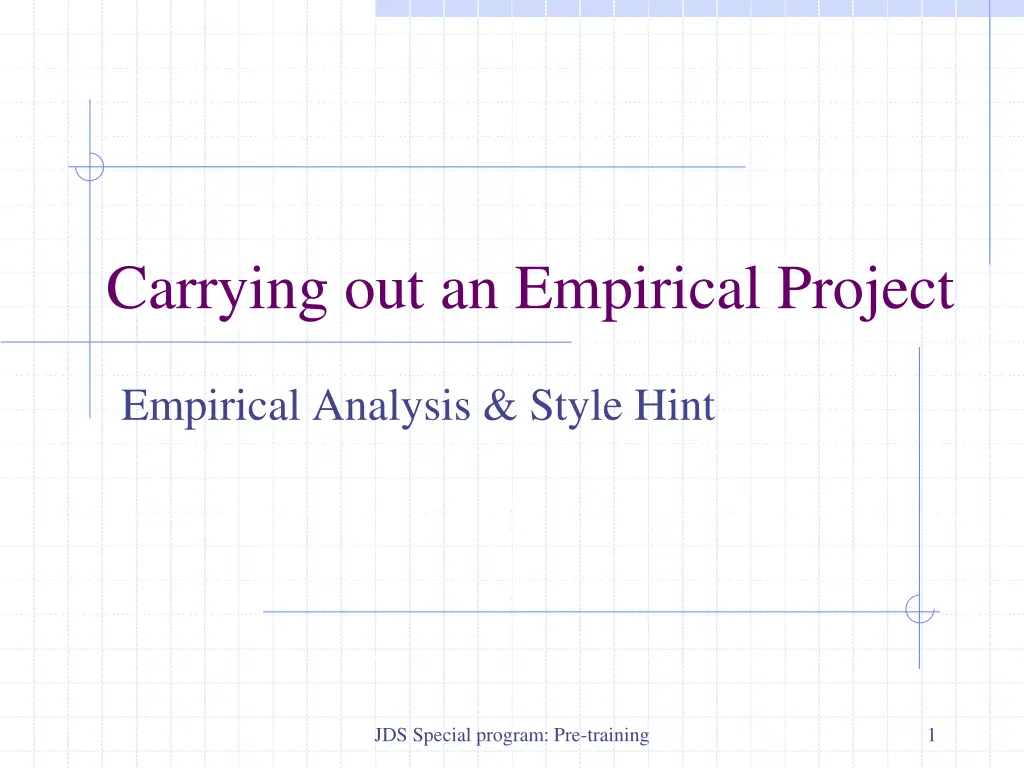
Empirical Project Analysis Steps: Question, Literature Review, Data Collection
Explore the essential steps in carrying out an empirical project, including posing a specific question, conducting a thorough literature review, collecting relevant data, and performing econometric analysis. Learn how to structure your research process effectively to ensure a successful empirical paper.
Download Presentation

Please find below an Image/Link to download the presentation.
The content on the website is provided AS IS for your information and personal use only. It may not be sold, licensed, or shared on other websites without obtaining consent from the author. If you encounter any issues during the download, it is possible that the publisher has removed the file from their server.
You are allowed to download the files provided on this website for personal or commercial use, subject to the condition that they are used lawfully. All files are the property of their respective owners.
The content on the website is provided AS IS for your information and personal use only. It may not be sold, licensed, or shared on other websites without obtaining consent from the author.
E N D
Presentation Transcript
Carrying out an Empirical Project Empirical Analysis & Style Hint JDS Special program: Pre-training 1
Carrying out an Empirical Project 1. Posing a Question 2. Literature Review 3. Data Collection 4. Econometric Analysis 5. Writing an Empirical Paper 2 Steps in Empirical Analysis Causality & Ceteris Paribus JDS Special program: Pre-training 2
1 Posing a Question Start with a general area or set of questions. Make sure you are interested in the topic. Use on-line services such as Google scholar to investigate past work on this topic. Narrow down your topic to a specific question or issue to be investigated. Work through the theoretical issue. You cannot be too ambitious for your master thesis. JDS Special program: Pre-training 3
2 Literature Review All papers, even if they are relatively short, should contain a review of relevant literature. On-line services are useful for lit-review . You can read abstracts of papers to see how relevant they are to your own work. Think of related topics that might not show up in a search using a handful of key words. JDS Special program: Pre-training 4
3 Data Collection Deciding on which kind of data to collect depends on the nature of the analysis. Investigate what type of data sets have been used in the past literature. The most important is whether there are enough controls to do a reasonable ceteris paribus analysis. Consider collecting your own data. JDS Special program: Pre-training 5
Inspecting Data, etc. You must know the nature of the variables in the data set. Measurement units, rates, etc. Check the data for missing values, errors, outliers, etc. Drawing graph, finding descriptive stats, etc. Create variables appropriate for analysis. For example, create dummy variables from categorical variables, create hourly wages, etc. JDS Special program: Pre-training 6
4 Econometric Analysis After deciding on a topic and collecting an appropriate data, decide on the appropriate econometric methods. If you want to use OLS, OLS assumptions must be satisfied for your model. The error term must be uncorrelated with x. Make functional form decisions. Log, interactions, dummy, etc. JDS Special program: Pre-training 7
Estimating a Model Start with a model that is clearly based in theory. Test for significance of other variables that are theoretically less clear. Test for functional form misspecification. Consider reasonable interactions, quadratics, logs, etc. JDS Special program: Pre-training 8
Cont. Estimating a Model Don t lose sight of theory and the ceteris paribus interpretation you need to be careful about including variables that greatly alter the interpretation. For example, effect of bedrooms conditional on square footage. Be careful about putting functions of y on the right hand side affects interpretation. JDS Special program: Pre-training 9
Cont. Estimating a Model Once you have a well-specified model, need to worry about the standard errors. Test for heteroskedasticity. Test for serial correlation if there is a time component. Correct if necessary. JDS Special program: Pre-training 10
Other Problems Often you have to worry about endogeneity of the key explanatory variable. Endogeneity could arise from omitted variables that are not observed in the data. because the model is really part of a simultaneous equation. due to measurement error. JDS Special program: Pre-training 11
Cont. Other Problems If you have panel data, you can consider a fixed effects model (or first differences). Problem with FE is that you need good variation over time. You can instead try to find a perfect instrument and perform 2SLS. Problem with IV is finding a good instrument JDS Special program: Pre-training 12
Interpreting Your Results Keep theory in mind when interpreting results. Be careful to keep ceteris paribus in mind. Keep in mind potential problems with your estimates be cautious drawing conclusions. You can get an idea of the direction of bias due to omitted variables, measurement error or simultaneity. JDS Special program: Pre-training 13
Further Issues Some problems are just too hard to easily solve with available data. May be able to approach the problem in several ways, but something wrong with each one. Provide enough information for a reader to decide whether they find your results convincing or not. JDS Special program: Pre-training 14
Cont.Further Issues Don t worry if you don t prove your theory. With unexpected results, you have to be careful in thinking through potential biases. But, if you have carefully specified your model and feel confident you have unbiased estimates, then that s just the way things are. JDS Special program: Pre-training 15
5 Writing an Empirical Paper 1. Introduction 2. Conceptual (or Theoretical) Framework 3. Econometric models & Estimation methods 4. The data 5. Results 6. Conclusion JDS Special program: Pre-training 16
A1: 2 Steps in Empirical Analysis An empirical analysis uses data to test a theory or to estimate a relationship 1. Constructing economic model wage = f (educ, exper, training) 2. Specifying econometric model wage = 0 + 1educ + 2exper + 3training + u (1.4) u is error term, and s are parameters. (1.2) JDS Special program: Pre-training 17
A2: Causality & Ceteris Paribus Economist s goal is to infer that one variable has acausal effecton another variable, for testing economic theory or for evaluating policy. Causal effect: A ceteris paribus change in one variable has an effect on another variable. Ceteris paribus: All other relevant factors are held fixed. JDS Special program: Pre-training 18
Example: Returns to Education A model of human capital investment implies getting more education should lead to higher earnings. In the simplest case, this implies an equation like wage = 0 + 1educ + 2exper + 3age + u . JDS Special program: Pre-training 19
Example cont. The error term, u, includes other factors affecting earnings, like gender difference or job training. The estimate of 1is the return to education. wage = = = = . . t s 0 exper age u 1 educ JDS Special program: Pre-training 20
Causality & Ceteris Paribus cont. Simply establishing a relationship between variables is rarely sufficient. If we ve truly controlled for enough other variables, then the estimated ceteris paribus effect can often be considered to be causal. Econometric methods can simulate a ceteris paribus experiment. JDS Special program: Pre-training 21



